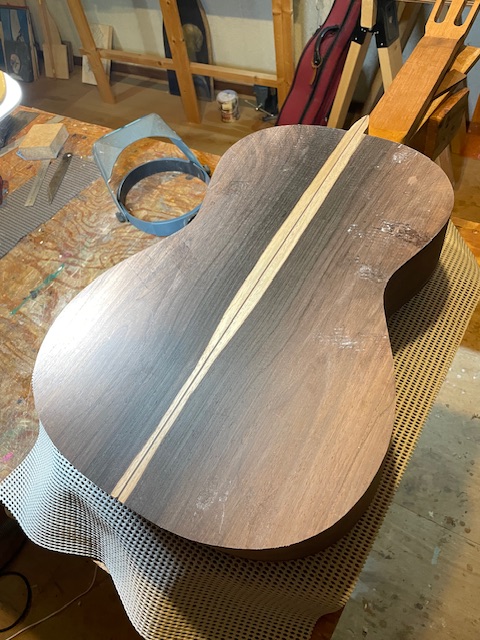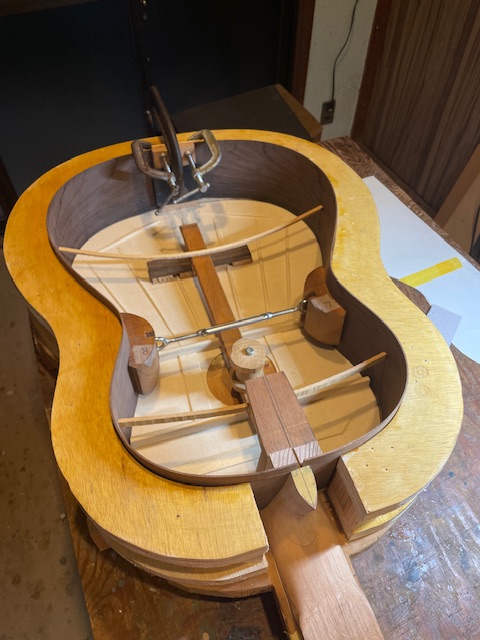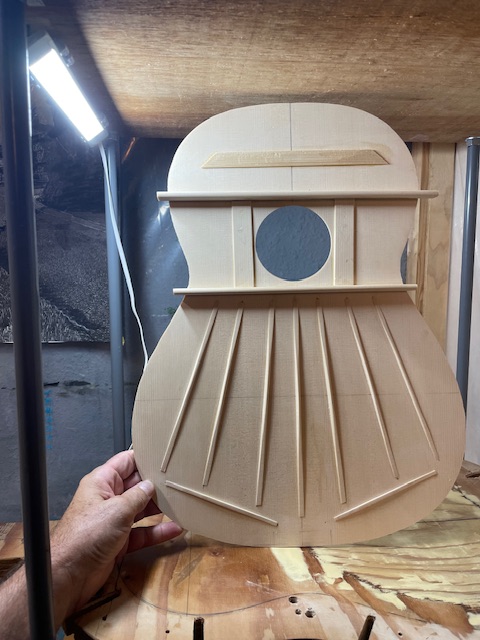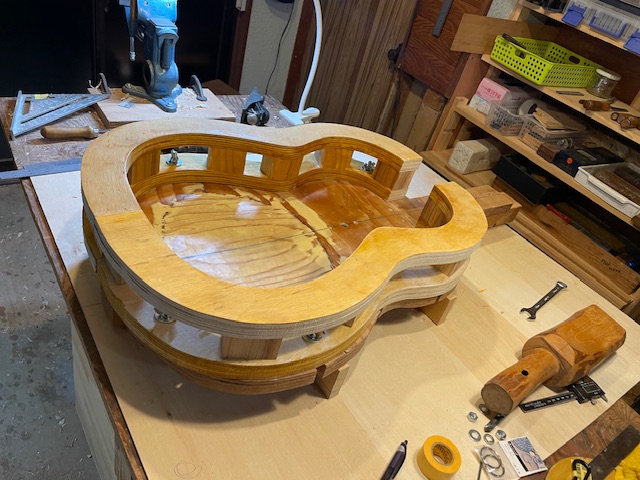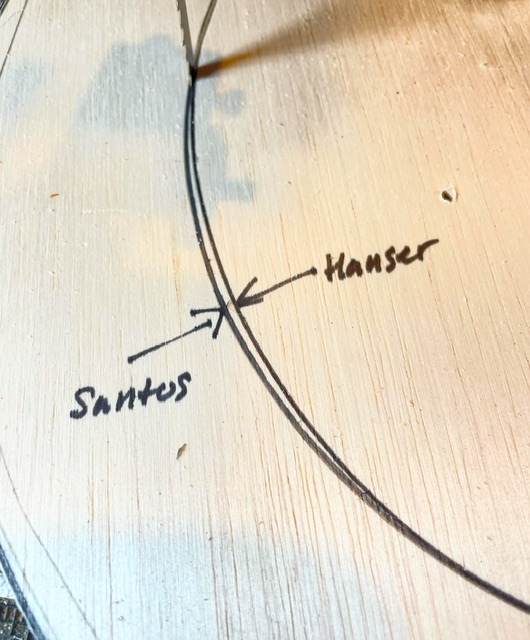|
estebanana -> RE: I changed my model after my taste changed (Oct. 12 2024 8:40:54)
|
Oranges are food, for example from Valencia, marmalade belongs on toast not spruce. Or in your English muffin, you might dollop marmalade onto a scone for tea time, or if you’re American on an ‘English muffin’ or if you’re Canadian you might mix marmalade into your putine gravy. All wildly good, but not on spruce.
Wolf tones, it’s a real phenomenon and maybe players call them dead notes, uneven notes or other names. But I agree with you Ricardo, it’s about perception.
This phenomenon often happens on F# fourth fret on D string. It can be very subtle, but it’s slightly false and hoarse sounding. What’s happening is that the note being sounded by the string is beating very slightly out of sync with a major resonance made possible by the volume of air in the body.
The string vibrates that’s the pure sound, but that also activates a body resonance that’s not beating exactly the same, but it’s more or less the same note.
An easy way to illustrate the concept is when we tune with harmonics. We strike two harmonics on different strings and then we tune one string to match the other string. And until we get them to the same pitch, while we get that one string closer to the other harmonic, you can hear the harmonics beating against each other. That’s basically almost the same thing as a ‘wolf tone’.
Now in the guitar body there’s a fixed amount of air and there are myriads of simultaneous resonances going off when you pluck the string and play a pitch. Each pitch activates a different series of resonances happening at once, that’s why we like guitars, the blends of these crazy resonances create the voice, whether it’s lush and smooth or raspy and reedy. We all have preferences. But like the harmonics when tuning some resonances can be dominanating and beat with the pitch that’s being plucked, but instead of turning the tuner grip and getting rid of the beating, we as guitar makers have to step around the typical zones we know create the false hoarseness that comes on certain notes.
Over time the Spanish makers worked out a well known zone that for the size, shade and pitch of guitar which would generally mitigate the clash of body resonance and string pitch. This coincides also with making guitars that don’t have over active sympathetic resonance on treble notes. The thing is if you work in that traditional envelope of body size, top stiffness, bridge weight and flexibility, brace patterns you avoid most of that annoying extraneous noise generated by overtones and body resonances that accentuate that noisy stuff. You want the guitar to be natural and non ‘up-tight’ but still have vibrancy and complexity in how all the resonances mix.,
There are three ways you achieve this, first you become an almost insufferable guitarsplainer who doesn’t make a move without testing every piece of wood with the oscilloscope of death and telling everyone on the internet about the karma catching the dogma. Two, you invent a shaggy dog story and disseminate it like a salty old dog, but it’s non essential meta lore created out of whole cloth with the intention of projecting a personal mythology origin story. ( anthropologists could study these cases) Or lastly by keeping you head down and building the conservative, but brilliantly designed classic brace patterns sensitively made bridges. The road to being a shokunin is paved with regular stones and lots of lunches in the shop eating soup while staring confusedly at thin panels of wood.
Theses more technically in how to skirt these wolf tones, but it’s also true that some people perceive a particular guitar to have these hoarse false notes, while another person will think the same guitar is fine. And others will almost unanimously agree certain guitars have so much extraneous noise they shouldn’t be in public.
Here’s the thing, if you have a guitar that you perceive to be too noisy and has these glitches where an overtone or a fretted pitch note sounds false, the first place to look is at the nut. Make sure the strings are bedded perfectly in the nut with no bumps or air under the string. Many noisy guitars have a messed up nut.
2- intonation! A great many squeals and off beating clashes can be tamed by intonation analysis. That’s a whole subject, hunting wierd beats and gurgles. If you put the time into this fine set up of intonation, or build it into the guitar the guitar will be less noisy with the extraneous sounds. Intonation work can shift the way the body resonance dances with the pitched fretted notes dramatically.
That’s why the other name for intonation work is called
Dances with Wolves
|
|
|
|
